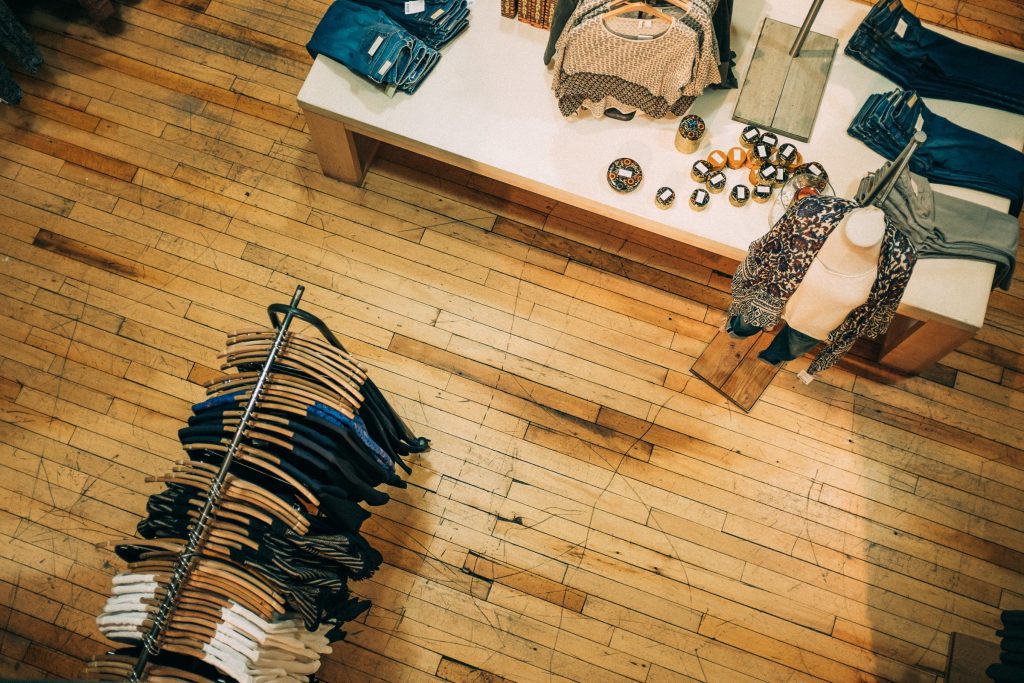
Originally published on Sivana East
My friend Hellen is a New York-based fashion director who has turned hundreds of designer labels into conceptual gold. If you happen to be in Brooklyn on a Sunday morning and stop by her cozy flat, boy are you in for a treat!
Not only will she make you a homemade blueberry pancake breakfast, but she’ll tell you about one of her many adventures around the world to places like Haiti and India, where she vets potential partnerships with fabric mills and manufacturers.
We got to talking one day about the soul of consumerism and whether consumer behavior would radically change if people understood the carbon footprint behind the products we buy, especially as it relates to the textile industry.
We came to the conclusion that education (and a little bit of therapy) might help to reduce emotional spending and excessive living. In the words of Maya Angelou, “when you know better, you do better.”
Did you know that the vast majority of clothing we buy is made of synthetic materials like petrochemical-based nylon, polyester and chemically-treated rayon, which uses huge amounts of energy to create? The chemicals used to treat these materials find their way into the air we breathe, the food we consume, and the water we drink.
According to the EPA’s Advancing Sustainable Materials Management, households in the U.S today generated more than 16 million tons of textile waste in 2014, with only around 2 million tons being recycled. Clothing today is made of materials designed for disposing rather than recycling.
The conditions of many clothing factories around the world remain less than ideal. Employee pay is low, workdays are long, and health benefits are non-existent. Not to mention the number of children who continue to be exploited and endangered by unsafe work environments.
Despite Bangladesh’s success in gaining a strong foothold in the industry, reports of negligence continue to be pervasive. One such incident resulted in a textile mill catching fire and eight workers losing their lives in September.
To our credit, American consumers are more conscious today than ever before of the impact of our purchases. We are willing to pay a little extra for products that are made ethically, and we consider labels and materials before swiping our cards. But, we still consume in excess because the motivating factor behind consumption is and will forever be emotion.
We buy to cover up heartache. We buy to grieve painful losses. We buy in spite of finances or qualified need. And the “things” we fill our homes and closets with feel like the glue that keeps us emotionally and mentally together.
Unfortunately, the temporary relief we experience when consuming material things is short-lived. Impulsive shopping especially leads to feelings of shame and guilt and never really gets to the root of our problems.
Perhaps it’s time to see consumerism through new eyes. Using a more humanistic framework like Buddhist economics — a consumer model that is built on three principles:
Buddhist economics value shared prosperity and sustainability over individualism. It says that an economy is only healthy when everyone (the rich and poor) can enjoy a high degree of mental and physical health.
It’s the difference between weighing Gross Domestic Product (GDP) and Gross National Happiness (GNH). Given the political tenor of our times, I’d say our GNH is way down. We are all a bit of an emotional hot mess, and therefore prone to making unnecessary purchases this Holiday season.
Let me be clear. I’m not saying we should stop shopping. I am saying that we should consider the full life cycle of a product, from the environmental resources and labor that went into making it, to how it will likely live in our homes and closets.
When you move beyond the “I” in that critical moment, as you bite your lip in indecision over buying the sweater that you already have in a different color, you might decide, “I really don’t need this.”
Feel good in knowing that the small, empowered choices we make in our lives contribute to the greater good of humanity.
We can prevent emotional spending by simply stopping and asking ourselves, “Why do I want this?”
To be fair, it’s hard to not want things. Behind every object you see online and in retail stores, there is a team of psychologists and marketing strategists who have considered everything from fonts to colors in an effort to win over consumers. For example, the colors red-orange and black appeal to impulse shoppers. Shoppers on a budget prefer navy blue or teal.
The system isn’t rigged in favor of the conscious consumer; which is why we have to commit to quieting the noise and listening to our inner wisdom. As you go to make your next purchase, consider the following questions:
Understanding the root of desire helps you to make more informed decisions. It also helps you realize that material things rarely satisfy the desires of our heart. It is often love, acceptance, and a sense of purpose that we’re after.
The Middle Pathway, according to Buddha, is simply the avoidance of extremes. It’s the embracing of both spiritualism and materialism.
Denying yourself material things in life isn’t necessary. There is nothing to be gained from either extreme asceticism or maniacal spending.
Author and thought leader Danielle Laporte once asked a Tibetan Buddhist about his understanding of desire. He said that “the art of it [desire] is to keep asking yourself quietly: Am I being pushy? Is my desire for freedom (I might add relationship or material things) clean, or is it tainted with all kinds of emotional overtones? Am I harming myself or others around me? Am I making a weird trip out of life, or living naturally or cleanly? In other words, how neurotic are my actions, speech and thoughts around liberation or awakening?”
Middle way living is clean and free of impulsivity.
So often we hear a good idea and think “I’m definitely going to implement that,” but we fall right back into old patterns of thinking and being. I really wanted to change this time. I wanted to go home, clear out my closet just as Hellen advised me to do, and make a list of the things I actually “needed.” This way I’d buy things with intention rather than emotion.
It helped that Hellen sent me home with a silk dress from her collection. It is a diamond in the disposable clearance sale rough that comprises most of my closet. I have many dresses, but this one feels like butter on my skin, and brings me peace of mind knowing how much love went into making it. That’s the beauty of quality fashion over “fast” fashion. Once you embrace the beautiful feeling of well-constructed clothing, you’ll never want to go back.
Whatever your product of choice — clothes, electronics, home decor — keep in mind the words of economist Clair Brown who said that, “true happiness comes from helping others, and suffering comes from our own mental states that cause us to desire more and more. We can end suffering by changing our state of mind.”

